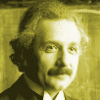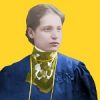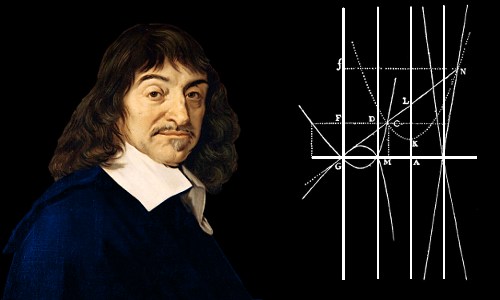Marie Curie
Marie Curie discovered two new chemical elements – radium and polonium. She carried out the first research into the treatment of tumors with radiation, and she was the founder of the Curie Institutes, which are important medical research centers.
She is the only person who has ever won Nobel Prizes in both physics and chemistry.
Advertisements
Marie Curie’s Early Life and Education
Maria Salomea Sklodowska was born in Warsaw, Poland on November 7, 1867. At that time, Warsaw lay within the borders of the Russian Empire. Maria’s family wanted Poland to be an independent country.Marie’s mother and father – Bronislawa and Wladyslaw – were both teachers and encouraged her interest in science.
When Marie was aged 10, her mother died. Marie started attending a boarding school, then moved to a gymnasium – a selective school for academically strong children. Aged 15, Marie graduated from high school, winning the gold medal for top student. She was passionate about science and wanted to continue learning about it.
Problems
Two obstacles stood in Marie’s way:- her father had too little money to support her ambition to go to university
- higher education was not available for girls in Poland
Two Polish Girls in Paris (Eventually)
To overcome the obstacles they faced, Marie agreed to work as a tutor and children’s governess to support Bronya financially. This allowed Bronya to go to France and study medicine in Paris.For the next few years of her life, Marie worked to earn money for herself and Bronya. In the evenings, if she had time, she studied chemistry, physics, and mathematics textbooks. She also attended lectures and laboratory practicals at an illegal free “university” where Poles learned about Polish culture and practical science, both of which had been suppressed by the Russian Tsarist authorities.
In November 1891, aged 24, Marie followed Bronya to Paris. There she studied chemistry, mathematics, and physics at the Sorbonne, Paris’s most prestigious university. The course was, of course, taught in French, which Marie had to reach top speed in very quickly.
At first she shared an apartment with Bronya and Bronya’s husband, but the apartment lay an hour away from the university. Marie decided to rent a room in the Latin Quarter, closer to the Sorbonne.
This was a time of hardship for the young scientist; winters in her unheated apartment chilled her to the bone.
Top Student Again
In summer 1893, aged 26, Marie finished as top student in her master’s physics degree course. She was then awarded industrial funding to investigate how the composition of steel affected its magnetic properties. The idea was to find ways of making stronger magnets.Her thirst for knowledge pushed her to continue with her education: she completed a master’s degree in chemistry in 1894, aged 27.
Homesick
For a long time, Marie had been homesick. She dearly wished to return to live in Poland. After working in Paris on steel magnets for a year, she vacationed in Poland, hoping to find work. She there were no jobs for her.A few years earlier she had been unable to study for a degree in her homeland because she was a woman. Now, for the same reason, she found she could not get a position at a university.
Back to Paris and Pierre
Marie decided to return to Paris and begin a Ph.D. degree in physics.Back in Paris, in the year 1895, aged 28, she married Pierre Curie. Pierre had proposed to her before her journey back to Poland. Aged 36, he had only recently completed a Ph.D. in physics himself and had become a professor. He had written his Ph.D. thesis after years of delay, because Marie had encouraged him to.
Pierre was already a highly respected industrial scientist and inventor who, at the age of 21, had discovered piezoelectricity with his brother Jacques.
Pierre was also an expert in magnetism: he discovered the effect now called the Curie Point where a change of temperature has a large effect on a magnet’s properties.
Marie Curie’s Scientific Discoveries
The Ph.D. degree is a research based degree, and Marie Curie now began investigating the chemical element uranium.Why Uranium?
In 1895, Wilhelm Roentgen had discovered mysterious X-rays, which could capture photographs of human bones beneath skin and muscle.The following year, Henri Becquerel had discovered that rays emitted by uranium could pass through metal, but Becquerel’s rays were not X-rays.
Marie decided to investigate the rays from uranium – this was a new and very exciting field to work in. Discoveries came to her thick and fast. She discovered that:
- Uranium rays electrically charge the air they pass through. Such air can conduct electricity. Marie detected this using an electrometer Pierre and his brother had invented.
- The number of rays coming from uranium depends only on the amount of uranium present – not the chemical form of the uranium. From this she theorized correctly that the rays came from within the uranium atoms and not from a chemical reaction.
- The uranium minerals pitchblende and torbernite have more of an effect on the conductivity of air than pure uranium does. She theorized correctly that these minerals must contain another chemical element, more active than uranium.
- The chemical element thorium emits rays in the same way as uranium. (Gerhard Carl Schmidt in Germany actually discovered this a few weeks before Marie Curie in 1898: she discovered it independently.)
“My husband and I were so closely united by our affection and our common work that we passed nearly all of our time together.”
Marie Curie
 Discovery of Polonium, Radium and a New Word
Discovery of Polonium, Radium and a New Word
Marie and Pierre decided to hunt for the new element they suspected might be present in pitchblende. By the end of 1898, after laboriously processing tons of pitchblende, they announced the discovery of two new chemical elements which would soon take their place in Dmitri Mendeleev’s periodic table. The first element they discovered was polonium, named by Marie to honor her homeland. They found polonium was 300 times more radioactive that uranium. They wrote:
“We thus believe that the substance that we have extracted from pitchblende contains a metal never known before, akin to bismuth in its analytic properties. If the existence of this new metal is confirmed, we suggest that it should be called polonium after the name of the country of origin of one of us.”The second element the couple discovered was radium, which they named after the Latin word for ray. The Curies found radium is several million times more radioactive than uranium! They also found radium’s compounds are luminous and that radium is a source of heat, which it produces continuously without any chemical reaction taking place. Radium is always hotter than its surroundings.
Together they came up with a new word for the phenomenon they were observing: radioactivity. Radioactivity is produced by radioactive elements such as uranium, thorium, polonium and radium.
A Ph.D. and a Nobel Prize in Physics!
In June 1903, Marie Curie was awarded her Ph.D. by the Sorbonne.Her examiners were of the view that she had made the greatest contribution to science ever found in a Ph.D. thesis.
Six months later, the newly qualified researcher was awarded the Nobel Prize in Physics!
She shared the prize with Pierre Curie and Henri Becquerel, the original discover of radioactivity.
The Nobel Committee were at first only going to give prizes to Pierre Curie and Henri Becquerel.
However, Pierre insisted that Marie must be honored.
So three people shared the prize for discoveries in the scientific field of radiation.
Marie Curie was the first woman to be awarded a Nobel Prize.
 “I have to keep going, as there are always people on my track. I have to publish my present work as rapidly as possible in order to keep in the race. The best sprinters in this road of investigation are Becquerel and the Curies.”
“I have to keep going, as there are always people on my track. I have to publish my present work as rapidly as possible in order to keep in the race. The best sprinters in this road of investigation are Becquerel and the Curies.”
Ernest Rutherford
Physicist
Marie Curie Theorizes Correctly About Radioactivity
 “Consequently the atom of radium would be in a process of evolution, and we should be forced to abandon the theory of the invariability of atoms, which is at the foundation of modern chemistry.
“Consequently the atom of radium would be in a process of evolution, and we should be forced to abandon the theory of the invariability of atoms, which is at the foundation of modern chemistry.
Moreover, we have seen that radium acts as though it shot out into space a shower of projectiles, some of which have the dimensions of atoms, while others can only be very small fractions of atoms. If this image corresponds to a reality, it follows necessarily that the atom of radium breaks up into subatoms of different sizes, unless these projectiles come from the atoms of the surrounding gas, disintegrated by the action of radium; but this view would likewise lead us to believe that the stability of atoms is not absolute.”
Marie Curie, 1904
Tragedy and Progress
The money from their Nobel Prizes made life easier for Marie and Pierre. For the first time, they could afford a laboratory assistant. Pierre took the Chair of Physics at the Sorbonne. The university also agreed to provide a new, well-equipped laboratory for the couple. In 1904, Marie and Pierre had a second daughter, Eve.And then their happy life together came to an end. In 1906, Pierre was killed when he was hit by a horse-drawn carriage in the street.
Although distraught over her loss, Marie accepted the offer from the Sorbonne to replace Pierre as the Chair of Physics.
Again, she was breaking the mold: she had been first woman to win a Nobel Prize, now she was the first female professor at the University of Paris.
Nobel Prize for Chemistry
In 1910, Marie isolated a pure sample of the metallic element radium for the first time. She had discovered the element 12 years earlier.In 1911, she was awarded the Nobel Prize for Chemistry for the “discovery of the elements radium and polonium, the isolation of radium and the study of the nature and compounds of this remarkable element.”
Again, Marie Curie had broken the mold: she was the first person to win a Nobel Prize in both physics and chemistry. In fact, she is the only person ever to have done this.
The Coming of War – Helping the Wounded
During World War 1, 1914 – 1918, Marie Curie put her scientific knowledge to use. With the help of her daughter Irene, who was only 17 years old, she set up radiology medical units near battle lines to allow X-rays to be taken of wounded soldiers. By the end of the war, over one million injured soldiers had passed through her radiology units.One of the Greats
Marie Curie was now recognized worldwide as one of science’s “greats.” She traveled widely to talk about science and to promote The Radium Institute which she founded to carry out medical research.Marie was one of the small number of elite scientists invited to one of the most famous scientific conferences of all-time – the 1927 Solvay Conference on Electrons and Photons.
Marie Curie, aged 59, at the 1927 Solvay Conference on Electrons and Photons. This was an invitation-only meeting of the world’s greatest minds in chemistry and physics. In the front row are Max Planck, Marie Curie, Hendrik Lorentz and Albert Einstein. In the row behind are Martin Knudsen, Lawrence Bragg, Hendrik Kramers, Paul Dirac and Arthur Compton. All except Knudsen and Kramers were Nobel Prize winners.
Healing the World – The Radium Institute
Marie Curie became aware that the rays coming from radioactive elements could be used to treat tumors. She and Pierre decided not to patent the medical applications of radium, and so could not profit from it.In her later years, Marie Curie’s dearest wish was to explore the use of radioactivity in medical applications. To do this, she established the Radium Institute.
At $120,000 per gram, radium was horrendously expensive – millions of dollars in today’s money. Marie Curie could only afford 1 gram of it for use in cancer therapies.
 Pierre Curie voluntarily exposed his arm to the action of radium during several hours. This resulted in a lesion resembling a burn that developed progressively and required several months to heal. Henri Becquerel had by accident a similar burn as a result of carrying in his vest pocket a glass tube containing radium salt. He came to tell us of this evil effect of radium, exclaiming in a manner at once delighted and annoyed: “I love it, but I owe it a grudge.”
Pierre Curie voluntarily exposed his arm to the action of radium during several hours. This resulted in a lesion resembling a burn that developed progressively and required several months to heal. Henri Becquerel had by accident a similar burn as a result of carrying in his vest pocket a glass tube containing radium salt. He came to tell us of this evil effect of radium, exclaiming in a manner at once delighted and annoyed: “I love it, but I owe it a grudge.”
Marie Curie, 1867 to 1934
Missy asked if there was any way she could help the Institute. Marie told her that American chemical companies had now isolated 50 grams of radium. Her Institute desperately needed one more gram for medical research, but could not afford it.
Missy returned to the USA and became Chair of the Marie Curium Radium Fund, with the aim of getting Marie Curie her 1 gram of radium.
Money was raised in small donations all over the country until $100,000 had been collected. The Standard Chemical Company of Pittsburgh then agreed to supply a gram of radium at the reduced price of $100,000.
On May 20th, 1921, President Warren G. Harding presented Marie with the radium in a lead-lined steel box at the White House.
Since then, the Radium Institute (now the called the Curie Institute) has gone from strength to strength. Three of its workers have been awarded Nobel Prizes: Irene and Frederic Joliot-Curie won the chemistry prize in 1935 and Pierre-Gilles de Gennes won the physics prize in 1991. Irene was Marie and Pierre’s daughter. She shared the prize with her husband Frederic. The Curie Institute continues to do important research work today.
The End
Marie Curie died aged 66 on July 4, 1934, killed by aplastic anemia, a disease of the bone marrow. The radioactivity she was exposed to during her career probably caused the disease.Scientists are now much more cautious in their handling of radioactive elements and X-rays than they were in the first few decades after their discovery. Marie Curie’s own books and papers are so radioactive that they are now stored in lead boxes, which may only be opened by people wearing protective suits.
 “Not only did she do outstanding work in her lifetime, and not only did she help humanity greatly by her work, but she invested all her work with the highest moral quality. All of this she accomplished with great strength, objectivity, and judgment. It is very rare to find all of these qualities in one individual.”
“Not only did she do outstanding work in her lifetime, and not only did she help humanity greatly by her work, but she invested all her work with the highest moral quality. All of this she accomplished with great strength, objectivity, and judgment. It is very rare to find all of these qualities in one individual.”
Albert Einstein
Theoretical Physicist
 “She not only conquered great secrets of science but the hearts of the people the world over.”
“She not only conquered great secrets of science but the hearts of the people the world over.”
New York Times, July 5, 1934
Marie Curie’s Obituary
Advertisements
Author of this page: The DocImages of Marie Curie enhanced and colorized by this website.
© All rights reserved.
Cite this Page
Please use the following MLA compliant citation:"Marie Curie." Famous Scientists. famousscientists.org. 8 Sep. 2014. Web. 12/24/2018 <www.famousscientists.org/marie-curie/>.Published by FamousScientists.org










No comments:
Post a Comment